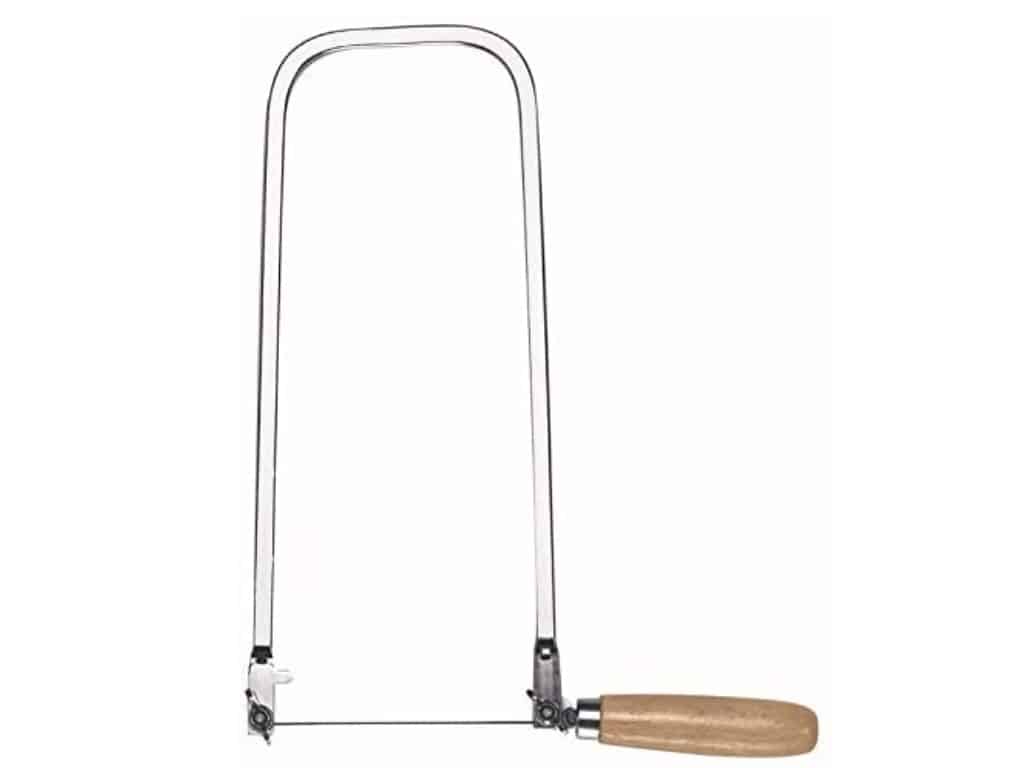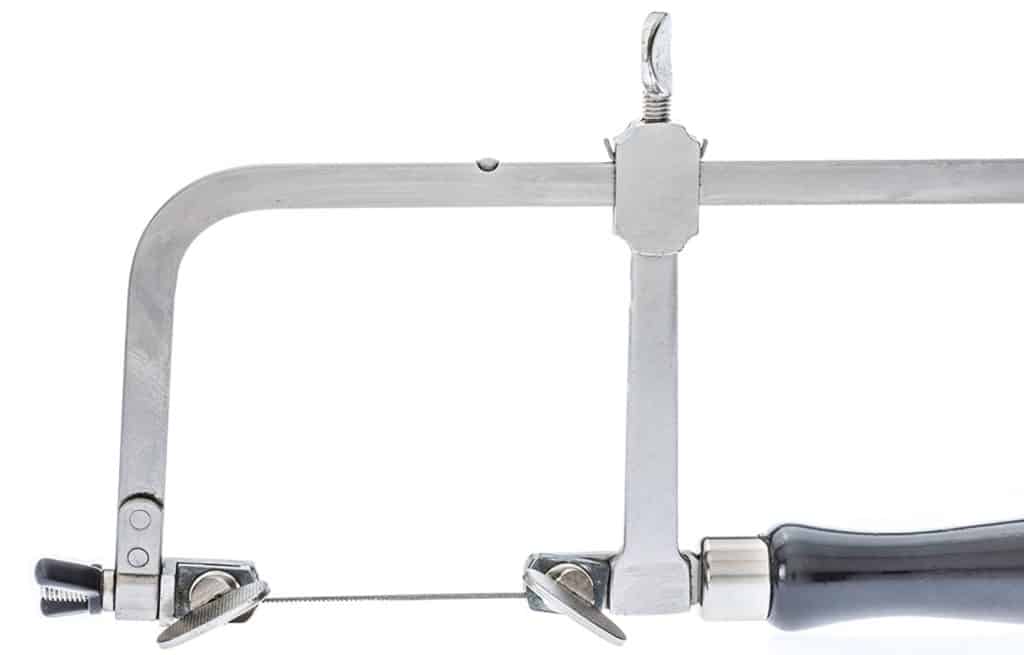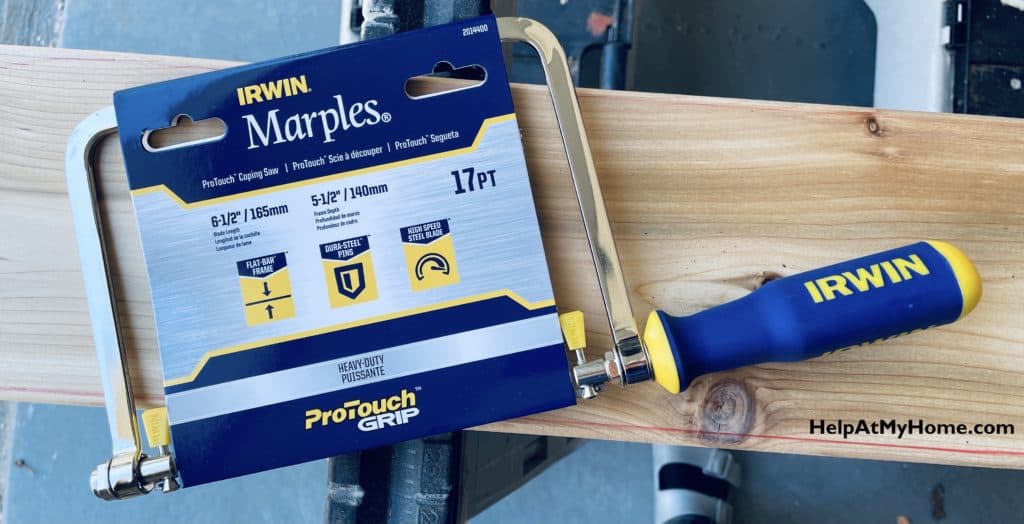Can you remember a time when you were trying to describe a tool, you could see it in your mind, you could draw it, but you were blanking on the name? Happens to the best of us.
If you are looking for the names of types of saws, this article should help out.
There are so many types of saw, that finding the exact one you are thinking of is a challenge. Or perhaps you know the cut you need, but you don’t know which hand saw is best.
Types of Saws
These are basically families of saws that live within the larger category of hand saws.

Bow Saw
This is a type of saw with an open metal frame with a curve to it, resembling a bow (with the blade as the string). This is a type of crosscut saw that is designed to be lightweight and functional.
Back Saw
This is a type of that is backed by a type of rigid spine the prevents the blade from flexing. While you could call a saw a “back saw” the term is generally used to describe a family of saws.
Buck Saw
This is a type of frame saw with and “H” shaped body used for crosscuts. Functionally itls similar to a bow saw, but a buck saw can collapse to fit into a backpack where a bow saw has a fixed metal frame.
Compass Saw
A long, narrow saw with a perpendicular “pistol” grip. Used for cutting “compasses” or curved interior cuts. They resemble a keyhole saw but will usually have a longer, courser blade.
Coping Saw
This is a type of bow saw, resembling a hacksaw, with a very thing blade that is under tension. Coping saws are quite difficult to use because the thin blade flexes, making consistent cuts difficult. The is the point of coping saw though — it’s designed to make small, intricate cuts, often on the interior of a piece of wood. Coping saws are capable of cutting curves, which makes them useful but also is why they are so hard to control.
Construction Saw
A generic term for a hand saw, normally referring to a rip saw.
Crosscut Saw
This is any type of saw used for cutting wood against the grain. The most famous type of crosscut saw is a two-person crosscut, which lumberjacks would use to cut felled trees, just like in the cartoons.
Dovetail Saw
A type of backsaw uses for rip cutting dovetails joints in the end of wood.
Drywall Saw
This is a type of jab saw or keyhole saw used specifically for cutting drywall (sheetrock).
Frame Saw
This is a type of saw that actually has a frame built around it. The frame holds the blade under tension, keeping it straight and rigid. This is an old fashioned type of saw that you might have seen at a lumber yard in the 1800s, not something you’d have in your garage today.

Fret Saw
A fret saw is a tall, exaggerated type of coping saw that is harder to control thanks to a thinner blade. On the upside, the fret saw can cut sharper angles and make more extreme rounded curved than a coping saw.
Hacksaw
This is a type of bow saw with a flexible metal blade that is kept under tension with the frame of the bow. Hacksaws are most commonly outfitted with metal-cutting blades and are using for cutting piping and other thin metals in home jobs.

Japanese Saw
There is a large range of saw known as Japanese saws, so this isn’t usually a very helpful term. Generally, a Japanese saw is a type of pull saw with a flexible blade with teeth on both sides. These come in designs that can be quite traditional or much more modern looking.
Jab Saw
This is a type of keyhole saw, but specifically one with a sharpened end that can be used to puncture drywall without a drill or utility knife.

Jeweler’s Saw
This is a very small type of coping saw with very fine teeth, used for cutting small pieces of metal.

Keyhole Saw
This is a small saw with a horizontal handle and an angled blade with course teeth. It’s designed to to into a hole in wood or drywall and make an interior cut from that hole, such as cutting the hole for an electrical box out of a piece of sheetrock.
Miter Saw
A miter saw isn’t really a type of hand saw, but rather a shorthand term used for referring to the combination of a miter box with a backsaw in it. Today when people refer to a “miter saw” they almost always mean a powered circular saw that can cut on an angle, not the miter boxes of yesteryear.
Pruning Saw
This is a saw designed for pruning woody plants in an outdoor garden. It’s a type of crosscut saw characterized by large, course teeth and a curved body. Pruning saws can usually fold in half.
Pull Saw
This is a type of saw designed to cut primarily on the pull action Japanese saws are generally pull saws where traditionally European saws are push saws.

Rip Saw
Any type of saw uses for cutting wood along the grain (in this way it’s the opposite of a crosscut saw). The term is often used for traditional looking carpenter’s saws.
Tenon Saw
A type of backsaw designed to make long cuts that are used in creating mortise and tenon joints. The term “tenon saw” is currently closely associated with Lie-Nielsen but it is not exclusive to them.
Veneer Saw
A small, perpendicular blade saw use for delicately cutting wood veneer by hand.
Wire Saw
This is a camping or outdoor survival tool that consists of a type of wire with some sort of blade on it and two loops at the ends. It’s used for cutting wood and brands, like you would a normal saw, but it’s lacking a rigid frame or fixed blade to keep it light and portable. It’s something you’d find in a survival kit, not a woodshed.

